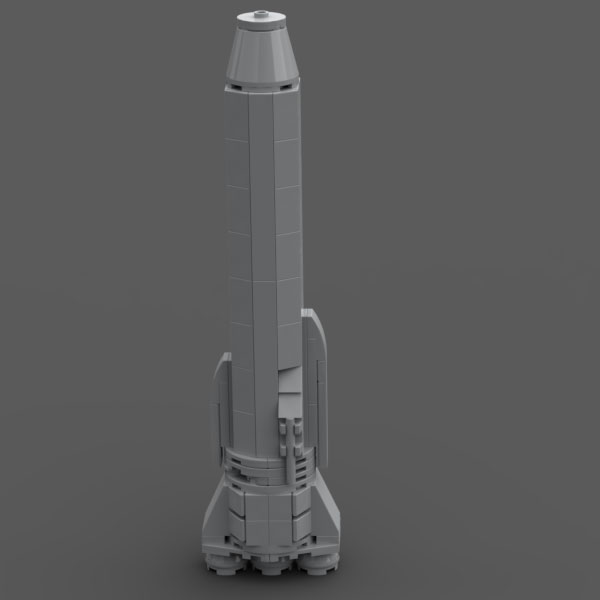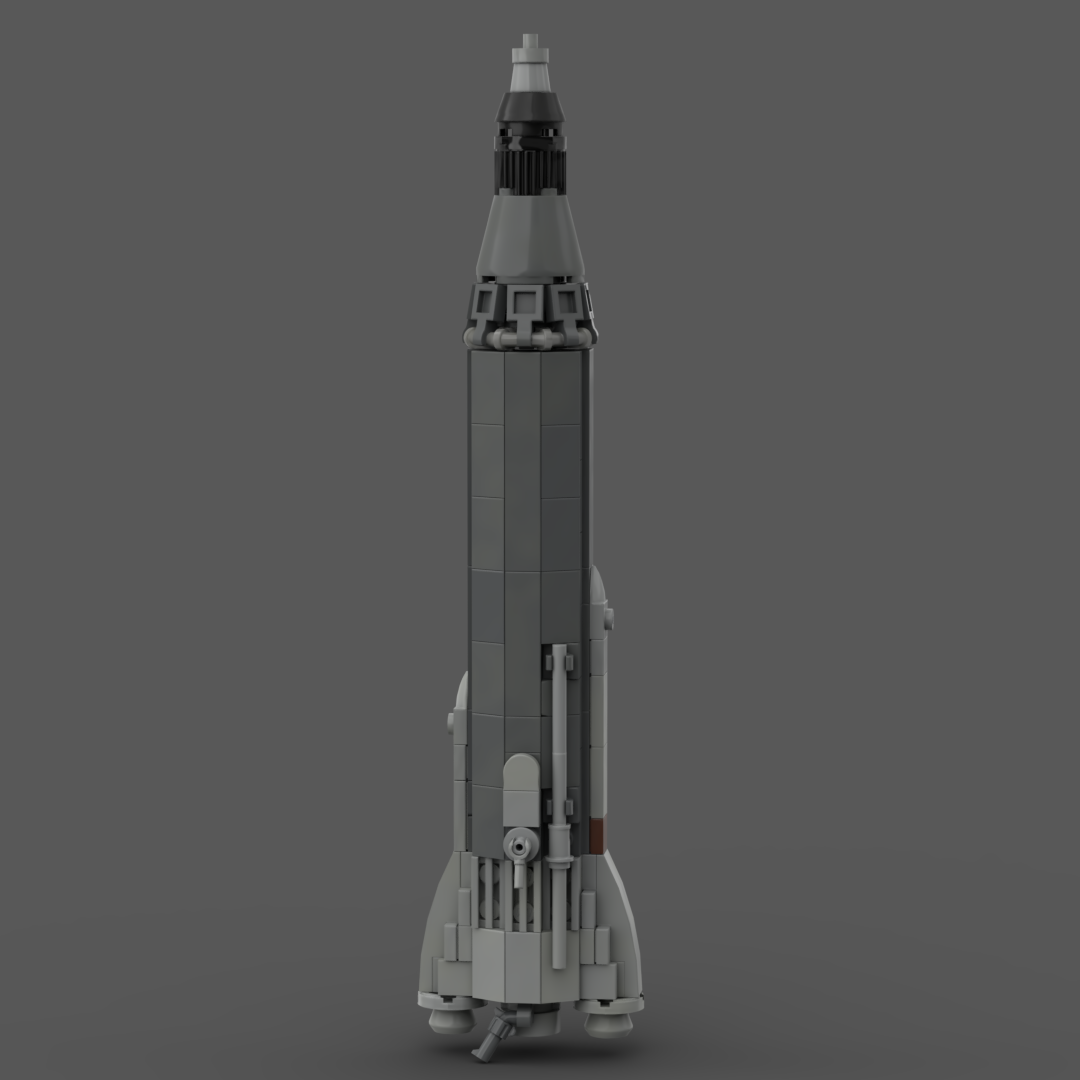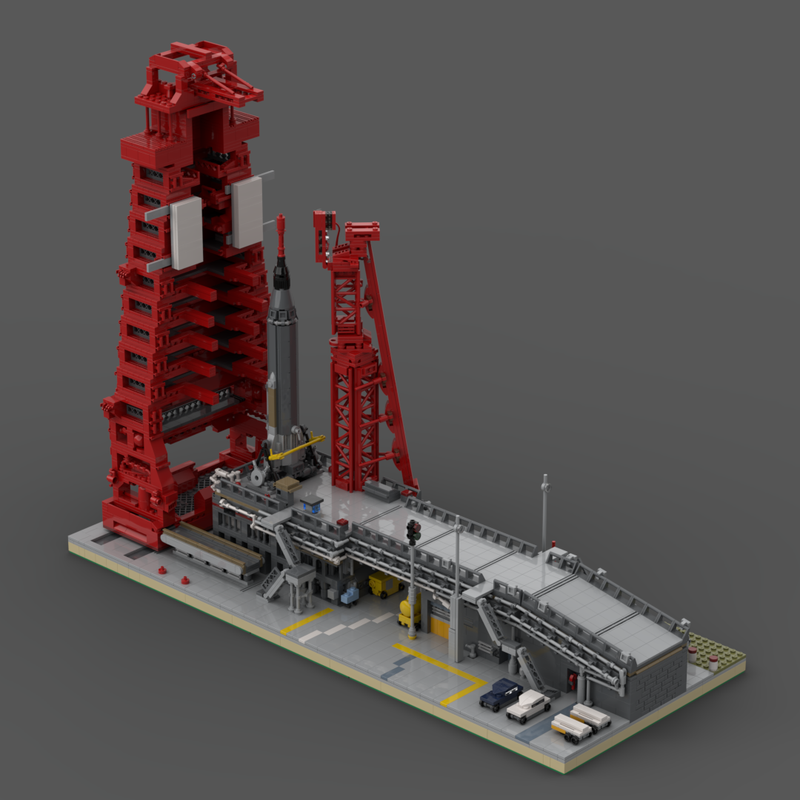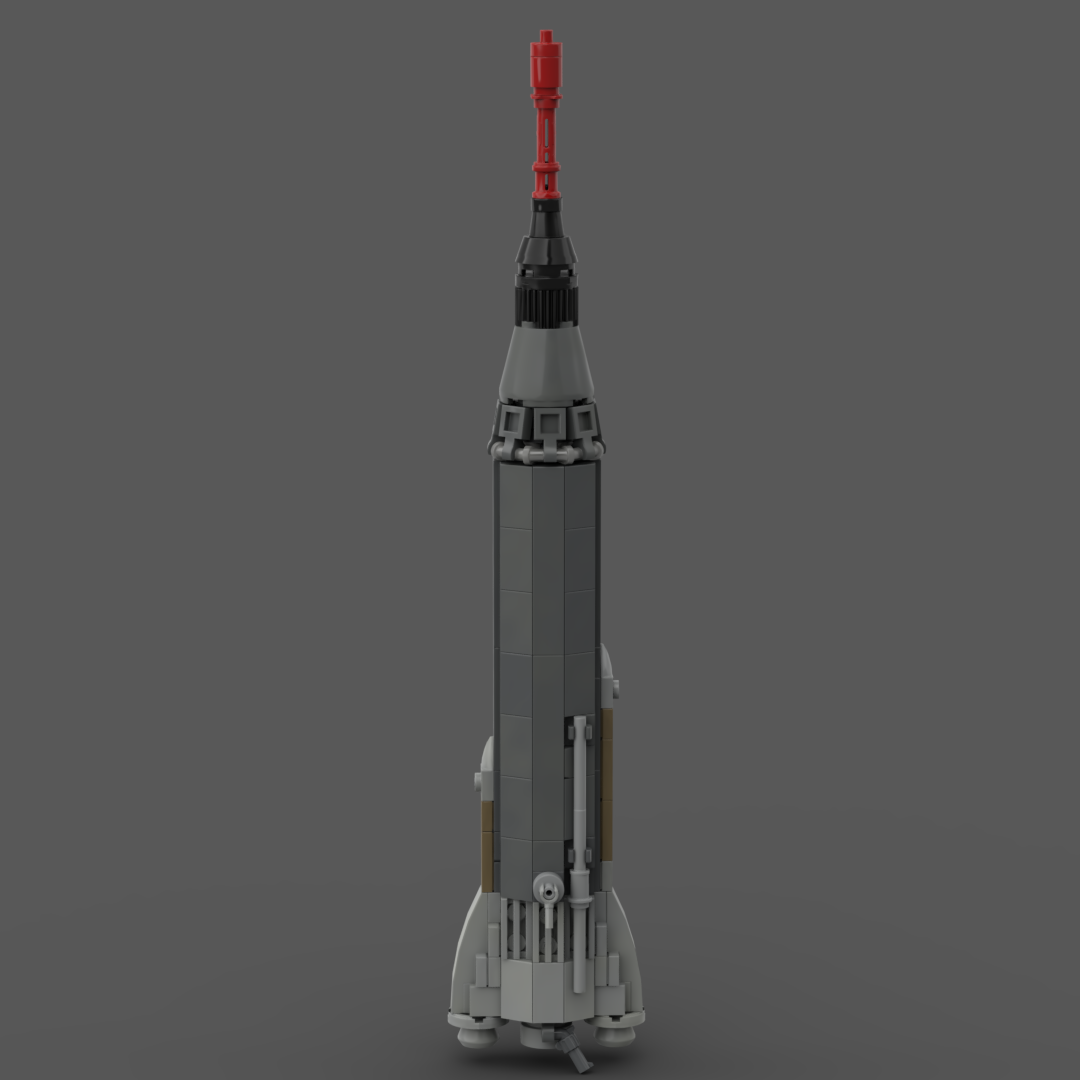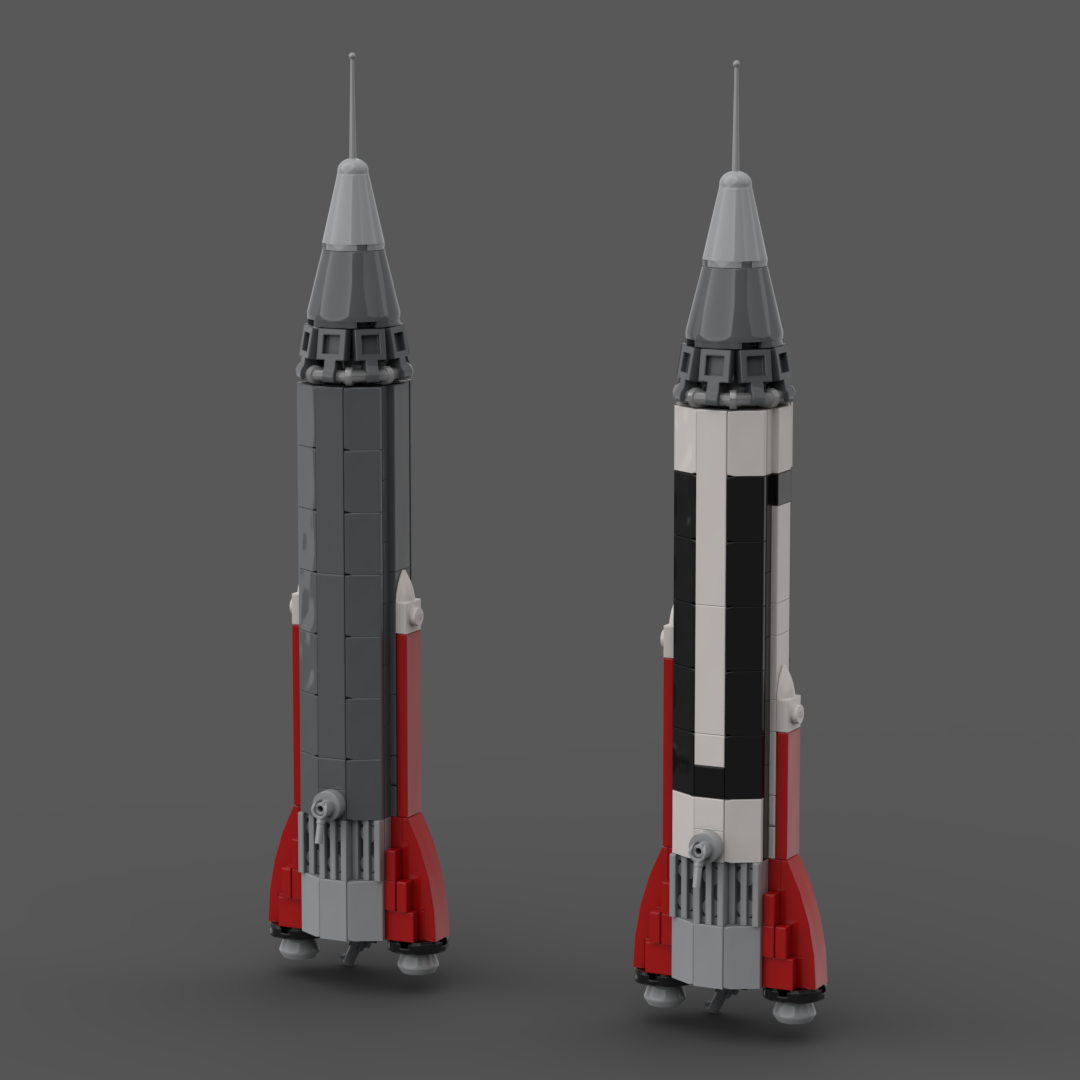
LEGO Designer:
Joey Zinga
Kevin Huang (Kehu05)
Designed:
January 2021
Categories:
All, Launch Vehicles, Small Lift Launch Vehicles, Space Agency - NASA
Launch Vehicle Details
Stages:
Length:
Diameter:
Mass at Launch:
Low Earth Orbit Capacity:
Total Thrust:
Apogee:
Class:
The Convair SM-65A Atlas, or Atlas A was the first full-scale prototype of the Atlas missile, which first flew on 11 June 1957. Unlike later versions of the Atlas missile, the Atlas A did not feature the stage and a half design. Instead, the booster engines were fixed in place, and the sustainer engine was omitted. The propulsion system used on the initial Atlas As was an early version of the Rocketdyne MA-1 engines with conical thrust chambers that produced a mere 135,000 pounds of thrust, compared with the 360,000 pounds of the fully operational Atlas D. Several pieces of hardware found on the operational Atlas were either missing on the A-series or only partially implemented. Powered flight on the A-series would last about two minutes and compared to later Atlases, long pad hold-down times, with up to 11 seconds between engine start and launcher release.
The first three Atlases built were used merely for static firing tests with Missile 4A being the first flight article. It was delivered to Cape Canaveral in December 1956 and erected on LC-14 in March 1957, where it sat until the following summer.
On June 11 1957, the Atlas made its maiden voyage. Engine start proceeded normally and the launcher release system also functioned properly. All went well until T+26 seconds when the B-2 engine lost thrust, followed two seconds later by the B-1 engine. The Atlas reached a peak altitude of 9800 feet (2900 meters) and tumbled end-over-end through its own exhaust trail until T+50 seconds when the range safety officer sent the destruct command.
On September 25 1957, Missile 6A was launched. Aside from more instrumentation in the thrust section and the above-mentioned helium vent modification, it was identical to 4A and predictably met the same fate as once again, the thrust section overheated.
On December 17 1957, Missile 12A lifted from LC-14. The Atlas performed well on its first successful launch, an event that raised morale after the devastating blow of two Soviet space launches and the failure of Vanguard a week earlier. This was the first Atlas with a functional guidance system, as Missiles 4A and 6A merely had a dummy guidance receiver that test patterns were transmitted to. At T+75 seconds, the guidance system tracking beacon shorted, which caused a momentary large drain on the batteries but did not otherwise affect missile performance. The missile’s flight trajectory in the yaw axis by the time of Booster Engine Cutoff (BECO) deviated by about 10,000 feet (3050 meters) from the planned program, studies of trajectory data showed this anomaly to be nearly constant during powered flight. It was concluded that there had been an incorrect offset in the yaw axis, either from a misaligned engine, yaw gyro, or some combination of both. After the success of the launch, the Air Force acknowledged for the first time that the missile was in fact an Atlas.
The fourth Atlas test involved Missile 10A, which was erected on LC-12 in September and would have been the third Atlas launched, but there were considerable difficulties getting it ready for flight. After the postflight findings from 6A, it was taken down for modifications and a PFRF firing on December 10 resulted in the B-1 thrust chamber rupturing from rough combustion. The thrust chamber was replaced, and a launch attempt was made on December 16, but had to be aborted following a leak in the B-1 main fuel valve. A second launch attempt on January 7, 1958 failed due to another fuel valve leak, and finally on January 10, the missile was launched. 10A performed an almost perfect flight, with no abnormalities of note occurring. This was also the first Atlas with functioning vernier engines, although they were not attached to the autopilot loop.
On February 7, Missile 13A was launched from LC-14. The engines switched to an improved variant of the MA-1 system with bell-shaped thrust chambers and 150,000 pounds of thrust, also the verniers were added to the autopilot loop for the first time. The APS (Auxiliary Power System) ceased operating at liftoff due to improper disconnect of a pad umbilical. At T+108 seconds, the engines started oscillating in all three axes and the propulsion system quickly shut down due to propellant starvation caused by missile tumbling. The Atlas broke up at T+163 seconds.
Missile 11A was launched from LC-12 on February 20. This was the first flight where a roll program was added to the autopilot. Once again, the vernier feedback transducer shorted, leading to complete loss of control at T+103 seconds. The booster engines shut down due to missile tumbling and breakup of the Atlas occurred at T+126 seconds.
Missile 15A was launched on April 5, following two aborted launch attempts on March 28 and April 1, the latter being called off when the V-2 vernier exploded at ignition. Because aerodynamic heating was believed to have caused the electrical malfunctions on 13A and 11A, more insulation and resistors were added around the vernier wiring and the fairing around the engine nozzles extended. The flight was uneventful until T+96 seconds when a momentary drop in B-1 thrust occurred. Total engine shutdown occurred at T+105 seconds and the Atlas fell into the Atlantic Ocean, remaining structurally intact until impact. Postflight analysis concluded that a bearing in the LOX turbopump gearbox had come loose, resulting in shutdown of the pump and loss of thrust.
The Atlas A program concluded with the flight of 16A on June 3 1958, which mostly completed its mission objectives, although several hardware malfunctions occurred. Overall the Atlas A conducted eight test flights, of which four were successful.
Part count: 192 bricks, 74 lots.
| Unit | width | length | height |
|---|---|---|---|
| Studs | 5.7 | 7.2 | 30.3 |
| Inches | 1.8 | 2.3 | 9.5 |
| Centimetres | 4.6 | 5.8 | 24.2 |
No external URL provided.
Launch History information from space.skyrocket.de
Launch History information from space.skyrocket.de


